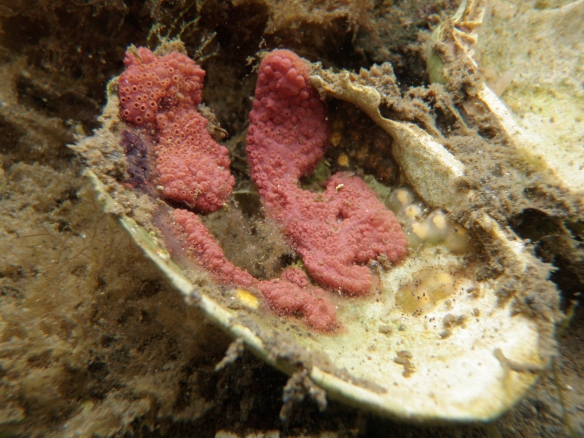By Danielle Ludeman
Reblogged from CPAWS-BC
As we disappeared into the depths of Howe Sound, I peered through the three-inch dome in front of me trying to catch the first glimpse of the sponge reefs below, and my excitement started to grow. But my excitement was not just about getting to see the sponges up close, or about being deeper in the ocean than I have ever been before – although these were both pretty exciting. As we descended into the depths, I realized the opportunity the submarine dive provided to highlight the need to protect the sponge reefs.
When I was first invited to be a passenger in the submarine I was so excited– I was going to be face-to-face with the beautiful glass sponges! (Anyone who knows me will be able to tell you how much I love sponges). And then of course came slight fear – I was going to be face-to-face with the beautiful glass sponges 250 feet (76.2 m) below the surface of the ocean in a submarine! Almost twice the maximum depth for certified, recreational divers.
As we continued our descent down into Howe Sound, I began to make out creamy, white shapes in the water below. I turned to the Hon. Andrew Wilkinson, a Minister in the provincial government, and Jeff Heaton, the pilot of Aquarius, to tell them excitably that there were sponges below! We had descended right down to the sponge reef, and there were the beautiful glass sponges only a few feet from me.
As a graduate student studying sponges I have been involved in research cruises to study the glass sponge reefs. Because the sponge reefs are found so deep in the Strait of Georgia, conventional sampling methods cannot be used. Instead, we use a remotely operated vehicle called ROPOS (picture a very large, square, yellow robot) to sample and survey the reefs, sending live video footage of the reefs up to the research vessel on the surface. I watched this live footage of the glass sponge reefs for hours on a tv screen. Now, I have had the amazing opportunity to experience the sponge reefs with my own eyes.
The glass sponge reefs have given me a sense of awe and wonder ever since I first began my undergraduate studies in Dr. Sally Leys’ lab at the University of Alberta. These glass sponges form massive reefs that serve as crucial habitat for fish, crabs, shrimp and many other critters. The sponges also filter massive amounts of water, removing bacteria and excreting ammonium, a source of nitrogen that can then be used by other animals around the reef.
But sponges are not like any other animal. A sponge is an animal without a digestive system or a nervous system, yet it will respond quickly to something in the water such as sediment, causing it to stop filtering. You wouldn’t know it from looking at the sponge reefs, but sponges are almost constantly pumping water through their bodies. One of the sponge reefs has been estimated to filter over 80,000 L of water every second! And here we have these massive reefs formed from this weird and amazing animal, right on Vancouver’s doorstep.
How have these reefs covered hundreds of square kilometers off the coast of British Columbia and we only just discovered them 25 years ago? How do so few people in Vancouver, in Canada, know that these reefs exist? And how have we, as Canadians, not protected such a beautiful and important habitat?
Protecting the sponge reefs requires public awareness, which is where the submarine dives come in. Until now, most people in Vancouver had never even heard of the sponge reefs. I am very hopeful that the submarine dives will create the public demand for their protection.
Shortly after the submarine dive event I headed down to Fremantle, Australia to attend the World Sponge Conference (yes it exists). While I was there I was talking to an old friend about my research. Their response was “Oh! I heard about sponges recently. It was about some sponge reefs that are only found in Canada. Is that what you study?” And so the ripples spread.









